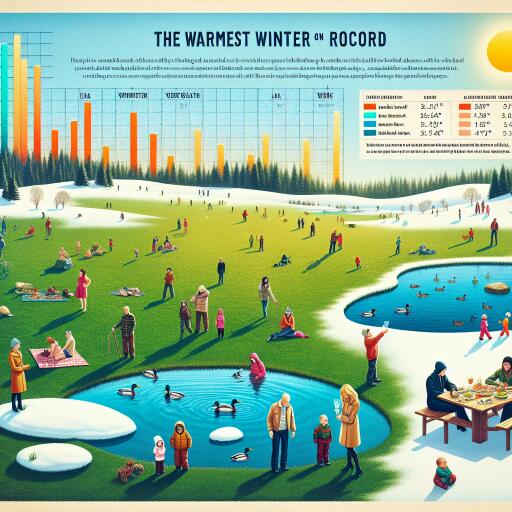
Unprecedented Warmth: The Winter That Never Was
The past winter season has rewritten the record books across a vast swath of the United States, especially in regions known for their bone-chilling cold. Cities such as Burlington, Vermont, and Portland, Maine, notable for their rugged, icy winters, astonishingly did not see temperatures dip below zero. The term “lost winter” has been coined in Minnesota to describe the unusual warmth, surpassing even the memorable “year without a winter” of 1877-1878. In Michigan, the unexpected bite of mosquitos in February was just one of the many anomalies of a season that defied expectations.
The consequences of such uncharacteristic warmth were felt far and wide. The Great Lakes experienced record low ice levels, with lakes Erie and Ontario virtually ice-free. This dramatic departure from the norm has not only impacted local ecosystems but has also had economic repercussions, with some regions offering disaster loans to businesses suffering from the snow shortfall.
Spring, it seems, decided to arrive early, with foliage and insect activity noted three to four weeks ahead of the historical average across an extensive area stretching from Colorado to New Jersey and from Texas to the Carolinas. This observation was supported by data from the National Phenology Network, which tracks seasonal changes in plant and animal behavior.
The absence of a traditional winter can be attributed to a combination of long-term warming trends and the natural climate phenomenon known as El Niño. This year, these forces aligned to effectively cancel winter in many parts of the U.S., with even climate scientists noting personal encounters with seasonal oddities, such as mosquito bites in the heart of what should have been winter.
The National Oceanic and Atmospheric Administration (NOAA) has confirmed the startling statistics: the winter of 2023-2024 stands as the warmest on record for the United States in nearly 130 years of record-keeping. The Lower 48 states averaged an unprecedented 37.6 degrees Fahrenheit, which is 5.4 degrees above the historical average. This winter not only broke the previous temperature record but did so by a significant margin, setting a new precedent for what a winter in the U.S. can entail.
Such temperature anomalies are not isolated events but part of a continuing trend of climate records being shattered, both nationally and globally. Scientists attribute the majority of this warming to human activities, primarily the burning of fossil fuels like coal, oil, and gas.
Interestingly, the rate of warming during winter months in the United States has outpaced global averages over the past 45 years. This is due, in part, to the fact that land tends to warm more quickly than oceans, and the U.S. is predominantly landmass. While the pace of warming has seen a slight deceleration since 2000, experts believe this may be linked to the phenomenon of Arctic Amplification. This refers to the disproportionately rapid warming of the Arctic compared to the rest of the world, a factor that may also influence weather patterns further south.
As we reflect on the winter that wasn’t, it becomes increasingly clear that the effects of climate change are both profound and wide-reaching, altering not just our environment but the very seasons themselves. The time is now to confront these changes head-on, recognizing our role in their cause, and more importantly, in their mitigation.
As the planet continues to warm, the impacts on weather patterns, ecosystems, and even our daily lives become more pronounced. This past winter serves as a stark reminder of the urgency with which we must address the underlying causes of climate change, for the sake of our planet and future generations.





Leave a Reply